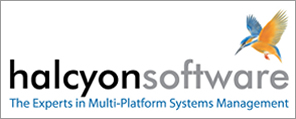How do you determine whether your maintenance agreement includes everything you'll need?
Editor's note: This article introduces the white paper "Getting Maximum Value from Your Software Maintenance Agreement" available free from the MC White Paper Center.
Most businesses invest in software and protect that investment with a maintenance agreement from the software vendor. Most IT managers must question at one time or another what exactly they're getting for their money from a software maintenance agreement.
Software maintenance is often defined as the process of updating software to meet changing needs. It includes adding new functions, fixing bugs, and adapting the software to work with new hardware and to be compatible with future releases of the operating system.
In this new white paper, Lorraine Cousins, CEO of Halcyon Software, discusses why you need a software agreement and what it should include. She defines the various subcategories of software maintenance and explains the two distinct types: "traditional" (or "corrective") maintenance and "evolutionary" maintenance.
As Cousins points out, some companies see their software maintenance agreement as a high-value proposition delivering new features that give tangible business benefits to the organization. Conversely, other organizations simply view their software maintenance agreement as an insurance policy to protect the business against the risk of software malfunction.
But just what should you expect from a software vendor in today's world to ensure the software is constantly moving in a direction that benefits your business?
All business software is purchased for sound business reasons. The functional capability and the price combine to deliver a value proposition upon which a clear investment decision can be made. As time goes on, that perceived value may change.
For example, significant costs for "lost time" can occur when users have to continually deal with software that does not function correctly or that cannot make adjustments for small or large changes in the business environment. The ability of a software vendor to change and adapt a solution quickly and reliably will have a significant impact on the ability of a business to take advantage of new opportunities.
How do your current and future software suppliers compare against best practices? What kinds of indicators or frameworks can you use to benchmark software providers to determine whether they are high-value or high-risk relationships?
Download this white paper to discover the 10 most important factors (i.e., things you should look for as a buyer) that indicate whether a software provider can deliver high-quality software and a reliable service that continues to be relevant to your business needs.












 Business users want new applications now. Market and regulatory pressures require faster application updates and delivery into production. Your IBM i developers may be approaching retirement, and you see no sure way to fill their positions with experienced developers. In addition, you may be caught between maintaining your existing applications and the uncertainty of moving to something new.
Business users want new applications now. Market and regulatory pressures require faster application updates and delivery into production. Your IBM i developers may be approaching retirement, and you see no sure way to fill their positions with experienced developers. In addition, you may be caught between maintaining your existing applications and the uncertainty of moving to something new. IT managers hoping to find new IBM i talent are discovering that the pool of experienced RPG programmers and operators or administrators with intimate knowledge of the operating system and the applications that run on it is small. This begs the question: How will you manage the platform that supports such a big part of your business? This guide offers strategies and software suggestions to help you plan IT staffing and resources and smooth the transition after your AS/400 talent retires. Read on to learn:
IT managers hoping to find new IBM i talent are discovering that the pool of experienced RPG programmers and operators or administrators with intimate knowledge of the operating system and the applications that run on it is small. This begs the question: How will you manage the platform that supports such a big part of your business? This guide offers strategies and software suggestions to help you plan IT staffing and resources and smooth the transition after your AS/400 talent retires. Read on to learn:
LATEST COMMENTS
MC Press Online